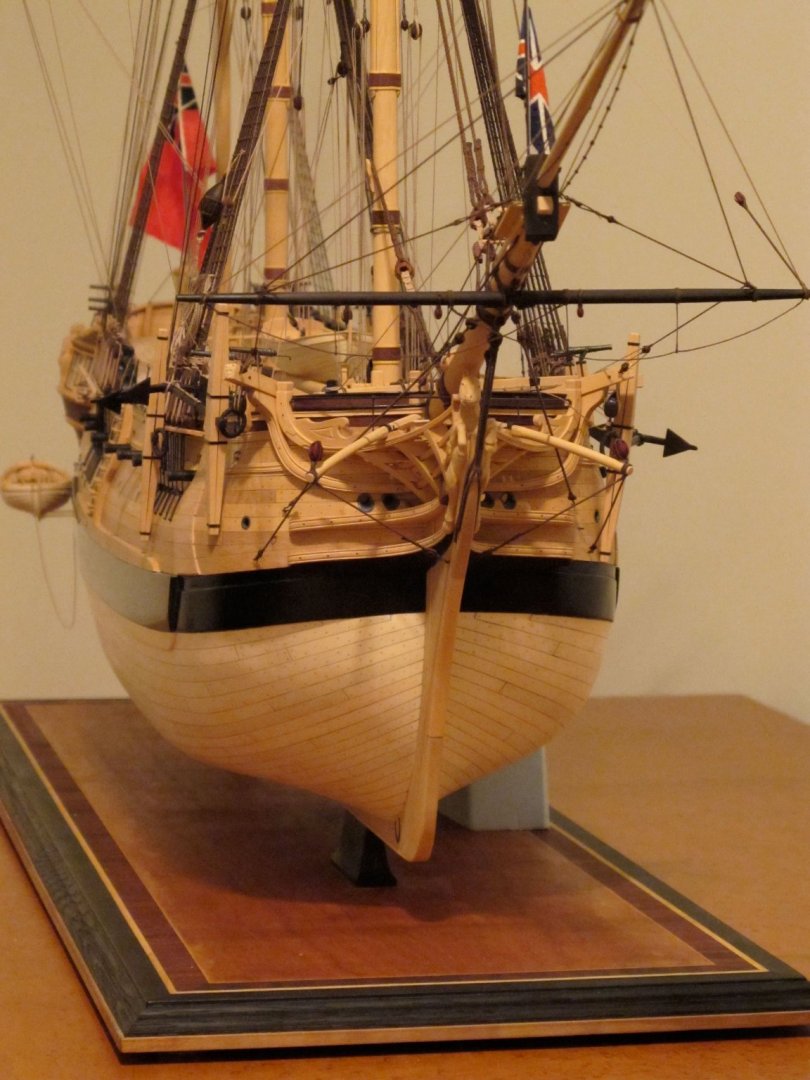-
Posts
13,371 -
Joined
-
Last visited
Content Type
Profiles
Forums
Gallery
Events
Everything posted by druxey
-
I don't think much aiming was involved when using a carronade - it was a short range, wide-spread anti=personnel weapon, Simply point it in roughly the right direction, No finesse required. Love the deck of cards, but shouldn't the image on the back of them be of, ahem, a deck? Happy if modified holidays!
- 542 replies
-
- Sphinx
- Vanguard Models
-
(and 3 more)
Tagged with:
-

One of the proposed alternatives to the Panama Canal
druxey replied to bruce d's topic in Nautical/Naval History
Yes, a classic palindrome, Frolick! Another example; 'evil rats on no star live'. -

Sea Witch 1846 by Zooker - RESTORATION
druxey replied to Zooker's topic in - Build logs for subjects built 1801 - 1850
As this is a complex job, I wonder if you have a ship model club in your area (wherever that is!)? If so, you will have access to a lot of experienced folk who can help you at your shoulder - covid permitting. They can show you what to do, which is easier than corresponding here. However, if that isn't possible, we'll try our best to assist online. -
A lovely little model. Apart from the maker's name, I think that there is perhaps an unconscious joke in there. There is a sect who believe in a literal 'translation' of the living to heaven at the Second Coming . They would be hoisted up by a (fictitious) hook-like bone at the base of their spines called 'the bone of Luz'.
- 7 replies
-
- whaleboat
- restoration
-
(and 2 more)
Tagged with:
-
Looking good, Dan. Rubbing alcohol is the modeler's best friend!
- 51 replies
-
- Model Shipways
- norwegian sailing pram
-
(and 1 more)
Tagged with:
-
I think that the example shown is more mid-1800's than earlier.
-
Footropes are under the jibboom, as Henry has said. You can just see a pair of these knotted ropes under the jibboom in the photo. The illustrated ropes are hand lines or manropes.
-
The acrylic 'glass' looks like antique mica now: the effect looks nice, actually. Nice splice as well.
-
Welcome back, Ben! Nice to see your Peggy once again.
- 889 replies
-
Looking good, Dan. Using scrap to practice on is always a good idea!
- 51 replies
-
- Model Shipways
- norwegian sailing pram
-
(and 1 more)
Tagged with:
-

Mondfeld v Lees Masting and rigging
druxey replied to DaveBaxt's topic in Masting, rigging and sails
I'm sure that in practice the actual masting, sparring and rigging varied a little from the ideal, especially in wartime with shortages. As long as you are reasonably close, no-one will fault you! -
Welcome to MSW Jimmy. Thank goodness ship modelers don't have to rely on clear skies!
-
It takes a bit of practice to learn to bend wood efficiently. Practie on scrap to gain confidence. If using an iron, wet the wood first and dial the temperature so that you hear a bit of a hiss (but not too much!) and not so hot as to begin to char the wood.
- 51 replies
-
- Model Shipways
- norwegian sailing pram
-
(and 1 more)
Tagged with:
-
I'm meaning only the style with the bolster or ledge included. I suppose the other place to stand would be higher, on the fore end of the channel. In any case, I believe that the sailor had a line tied around him for safety! However, it's your model, your decision, Siggi.
-
Love your buisiniers! Four shrouds a side makes perfect sense as they are easier to install in pairs. You are making great progress, Steven.
-
My understanding is that the forward end of the little 'platform' was left clear for a sailor to stand on. He cast a lead to make depth soundings (the 'leadsman'). This is why your option 3 for the bill-board, set back even few more inches, is what was most likely; even if not the most aethetic choice.
About us
Modelshipworld - Advancing Ship Modeling through Research
SSL Secured
Your security is important for us so this Website is SSL-Secured
NRG Mailing Address
Nautical Research Guild
237 South Lincoln Street
Westmont IL, 60559-1917
Model Ship World ® and the MSW logo are Registered Trademarks, and belong to the Nautical Research Guild (United States Patent and Trademark Office: No. 6,929,264 & No. 6,929,274, registered Dec. 20, 2022)
Helpful Links
About the NRG
If you enjoy building ship models that are historically accurate as well as beautiful, then The Nautical Research Guild (NRG) is just right for you.
The Guild is a non-profit educational organization whose mission is to “Advance Ship Modeling Through Research”. We provide support to our members in their efforts to raise the quality of their model ships.
The Nautical Research Guild has published our world-renowned quarterly magazine, The Nautical Research Journal, since 1955. The pages of the Journal are full of articles by accomplished ship modelers who show you how they create those exquisite details on their models, and by maritime historians who show you the correct details to build. The Journal is available in both print and digital editions. Go to the NRG web site (www.thenrg.org) to download a complimentary digital copy of the Journal. The NRG also publishes plan sets, books and compilations of back issues of the Journal and the former Ships in Scale and Model Ship Builder magazines.





